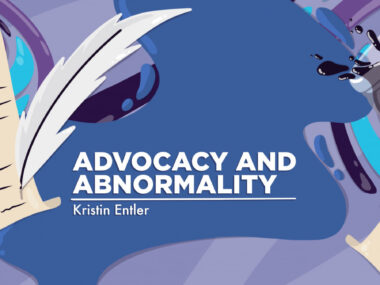CFTR Modulators Found to Improve Antibiotic Efficacy in CF: Study
Approved therapies show activity against bacteria types common in CF
Written by |

CFTR modulators, approved therapies to treat cystic fibrosis (CF), showed antibacterial activity and enhanced the efficacy of some antibiotics against bacterial species commonly found in CF airways, according to a new study.
“Additive effects or synergies were observed between the CFTR modulators and antibiotics against [two common] species” of bacteria, the researchers wrote.
In a mouse model, the team also showed that bacterial infections in the lungs affect the levels of CFTR modulators in the airways.
These findings may help optimize the use of CFTR modulators and antibiotics to improve the effectiveness of personalized treatment, the researchers noted.
The study, “Mutual Effects of Single and Combined CFTR Modulators and Bacterial Infection in Cystic Fibrosis,” was published in the journal Microbiology Spectrum.
CFTR modulators plus antibiotics show ‘additive effects’
Mutations in the CFTR gene are the underlying cause of CF and result in defects in the CFTR protein. CFTR modulators are a group of widely-approved therapies designed to correct specific defects in the CFTR protein.
Despite their established clinical benefits, however, response to these therapies can vary from patient to patient, suggesting other factors may influence the effectiveness of modulators.
Because bacterial infections commonly occur in CF lungs, the impact of CFTR modulators on lung bacteria also may impact their efficacy.
To find out, a team of scientists in Italy tested the effects of CFTR modulators, either alone or combined with antibiotics, on bacteria samples isolated from CF lungs.
The CFTR modulators tested included ivacaftor (sold as Kalydeco), lumacaftor, approved in combination with ivacaftor as Orkambi, and tezacaftor, sold in combination with ivacaftor as Symdeko. Elexacaftor, combined with tezacaftor and ivacaftor as the triple combination therapy Trikafta, and Trikafta itself, also were assessed.
Samples of two bacteria commonly found in CF airways — Staphylococcus aureus and Pseudomonas aeruginosa — were collected from CF patients at the early stages of colonization, and again at later stages when the bacteria had adapted to the CF lung environment. Staphylococcus aureus is known as S. aureus while Pseudomonas aeruginosa is commonly called P. aeruginosa.
The bacteria were then exposed to increasing levels of CFTR modulators. Antibacterial activity was measured by the lowest concentration of medicine that effectively suppressed bacterial growth, called the minimum inhibitory concentration, or MIC. Lower MIC values indicated more potent antibacterial activity.
Results revealed that ivacaftor had the most potent antibacterial activity, with MICs ranging from 2 to 8 micrograms per mL (mcg/mL) for all the S. aureus samples. This was followed by elexacaftor, with a MIC of 16 mcg/mL for most samples. Lumacaftor and tezacaftor, however, showed little or no signs of antibacterial activity, with MICs above 32 mcg/mL.
Triple combination therapy elexacaftor/tezacaftor/ivacaftor (ETI) also showed strong antibacterial activity, with MICs between 2 and 8 mcg/mL. By contrast, all CFTR modulators showed little or no activity against P. aeruginosa samples (MICs more than 32 mcg/mL).
Testing against S. aureus and P. aeruginosa
Next, the researchers mixed CFTR modulators with antibiotics to measure potential additive or synergistic effects, meaning antibacterial activity greater than the sum of either individual medicine.
Ivacaftor enhanced the activity of the antibiotic linezolid in most S. aureus samples while enhancing amoxicillin, vancomycin, and teicoplanin on a more limited scope. Lumacaftor — which did not show antibacterial activity alone — and ivacaftor both enhanced vancomycin and teicoplanin against the S. aureus reference (control) strain.
Even though CFTR modulators showed no activity against P. aeruginosa on their own, ivacaftor strongly enhanced the activities of two antibiotics, colistin and polymyxin B, against more than 95% of the P. aeruginosa samples, mostly synergistically. Triple combination ETI showed an additive effect on the activities of colistin and polymyxin B in several P. aeruginosa samples.
To investigate the impact of bacterial infection on CFTR modulator pharmacokinetics, or how the medicines move into, through, and out of the body, the team used an established mouse model with P. aeruginosa pneumonia. Mice were treated with ivacaftor at a dose similar to humans, then samples of blood, lung, and epithelial lining fluid, which lines the airways, were tested.
Peak bloodstream levels of ivacaftor, reached one hour after treatment, were higher in non-infected animals compared with infected mice. Over time, however, ivacaftor was higher in P. aeruginosa-infected than non-infected mice, “indicating higher exposure in the presence of infection,” the team wrote.
Our results underline that CFTR modulators influence antibiotic efficacy through a direct or synergistic effect.
Ivacaftor in the epithelial lining fluid followed a similar pattern, with higher levels in non-infected mice soon after treatment but higher levels over time with infection.
In lung samples, ivacaftor showed similar levels in infected and non-infected mice for up to two hours, but were higher with infection after six hours. Further tests indicated that ivacaftor penetrated lung tissue very well, the researchers noted, particularly in infected mice.
“This work supports the interaction of CFTR modulators with opportunistic bacterial infection and antibiotics,” the researchers concluded. “Our results underline that CFTR modulators influence antibiotic efficacy through a direct or synergistic effect.”
“This may orient the selection of specific antibiotics to treat infection in combination with CFTR modulators,” they concluded.







